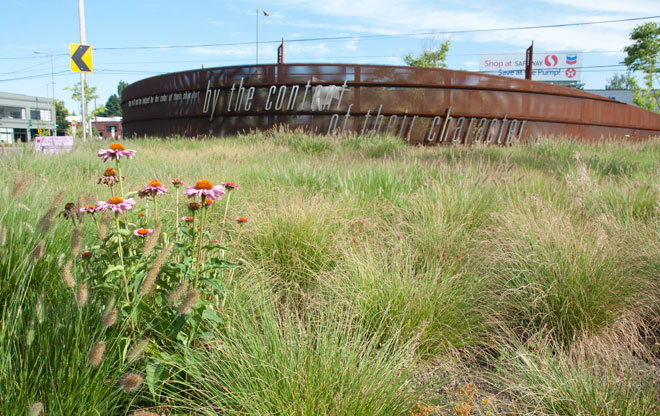
Honoring Martin Luther King, Jr.
The CorTen scrim presents one of Martin Luther King, Jr's most famous quotes, while also evoking the local history of the district’s wartime ship-building industry. Vehicles flow around the scrim wall that acts as a threshold into the districts flanking NE Martin Luther King, Jr. Boulevard. Fast-moving traffic makes it difficult to activate the space, but the scrim wall creates a pocket of quiet and protection in the plaza.
Image: Rachel Hill 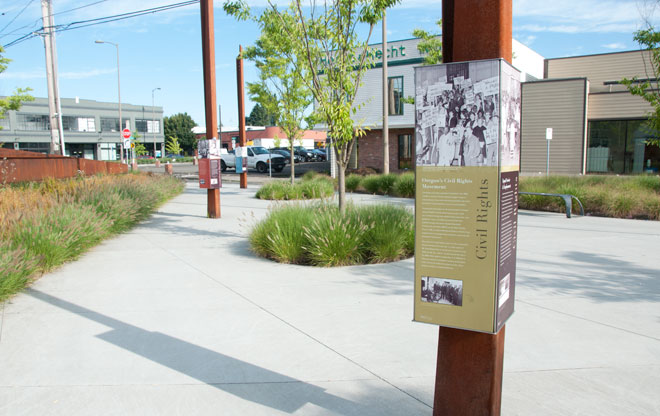
Depicting the Community's History
Through nearly 30 public meetings, the design team collaborated with residents to identify themes that both shaped and commemorate the community. Interpretive panels printed on weathered steel are mounted upon 20-foot-tall markers lit from within. They also serve as beacons to oncoming traffic.
Image: Rachel Hill 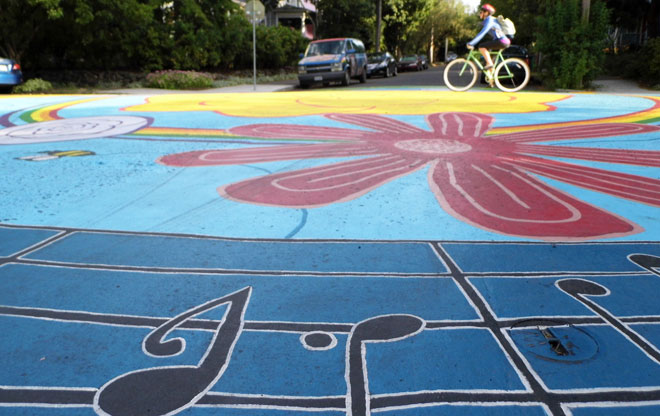
Rose City
The process of designing and painting the intersection of NE Tillamook and NE Rodney required a positive vote of 80 percent of the neighbors. The rose is a tribute to the larger community of Portland, the Rose City. The musical notes commemorate the jazz music that was once played in local clubs. The painting sits on a busy bike boulevard that connects NE Portland to downtown.
Image: Rachel Hill 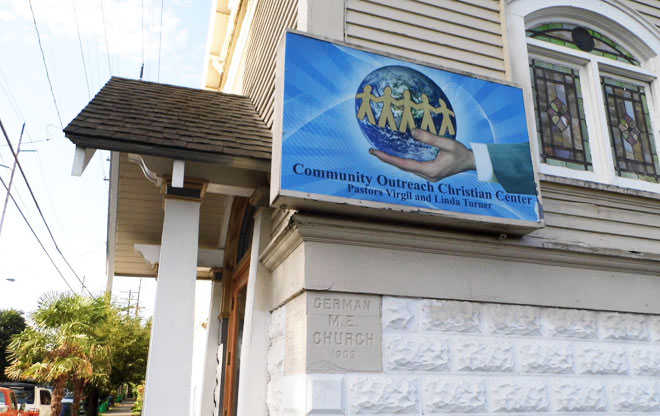
Evolving Churches
Two former German churches sit on nearby street corners on Rodney Avenue. They both became churches with predominantly African American congregations in the middle of the century. St. Mark’s (NE Rodney and Morris) congregation dissolved in 2012, and the structure is now being converted to residential units. The German Bishopric Methodist Church (NE Rodney and Stanton) became the St. Paul Church of God in Christ and still operates as a church.
Image: Rachel Hill 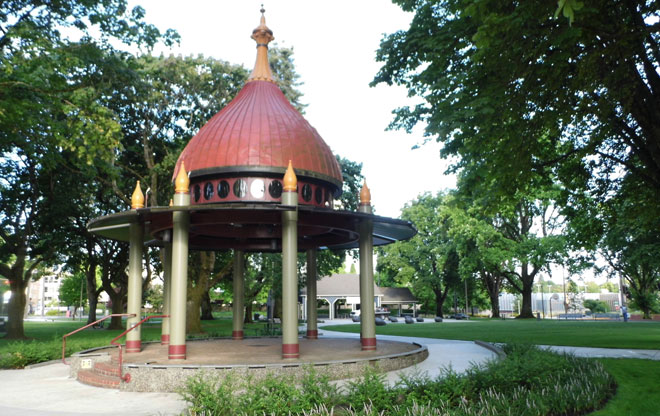
Remnants Preserved
The dome and bricks in the gazebo of Dawson Park are the last remnants of the Hill Building, a distinguished commercial building on the once bustling Williams streetcar route. When the streetcar stopped, the corridor lost its vibrancy. Much of the commercial district was razed when Legacy Emanuel Medical Center expanded during the controversial 1960s and 1970s urban renewal efforts. The newly renovated park is now a vibrant green space.
Image: Rachel Hill 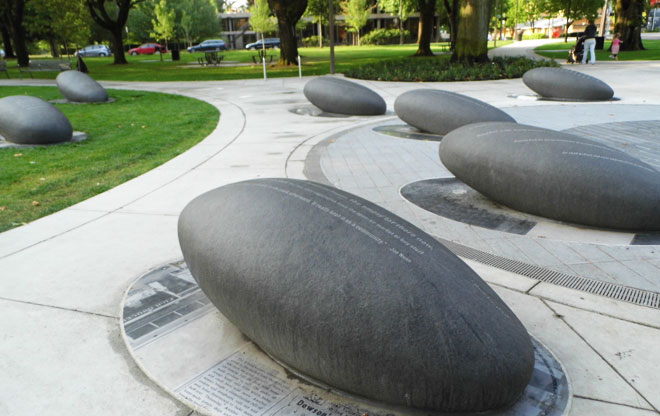
Dawson Park
Dawson Park was the heart of African-American culture in Portland during the 1950s. It's the site of important civil rights events. Much of this is a memory. When the park was given a facelift by 2ink Studios in 2014, a participant at a community meeting said the basalt stones with inscriptions of the impactful past were akin to gravestones. At the same time, the park has taken on new vitality as a beautiful green space in a neighborhood that exposes the complexity of change.
Image: Rachel Hill 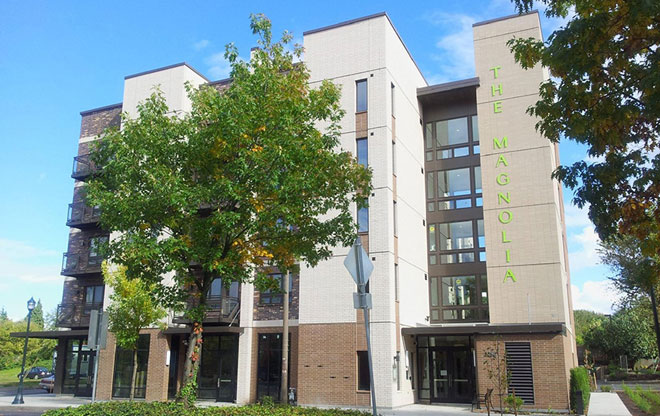
Magnolia Affordable Housing
Sustainable revitalization means supporting long-standing small businesses, creating local jobs, and helping people remain in their neighborhoods. However, gentrification is a force to be reckoned with. The Magnolia (NE MLK and Cook Street) is affordable housing aimed at helping residents, somewhat ironically, combat displacement and remain living in place. Currently, it sits on its own, next to open lots prime for redevelopment, as if observing cautiously the double-edged sword of redevelopment on MLK.
Image: Energy Trust